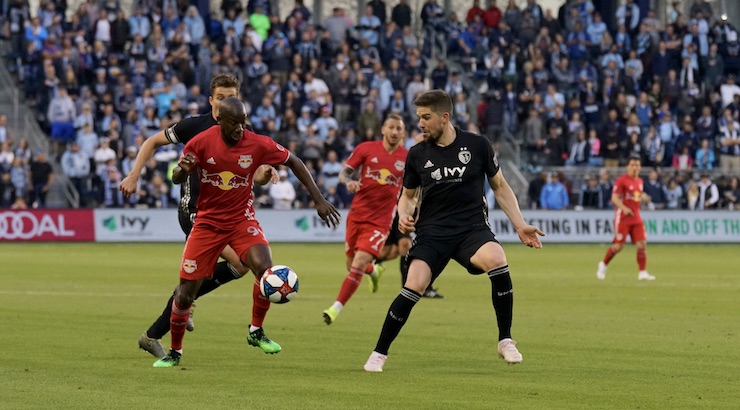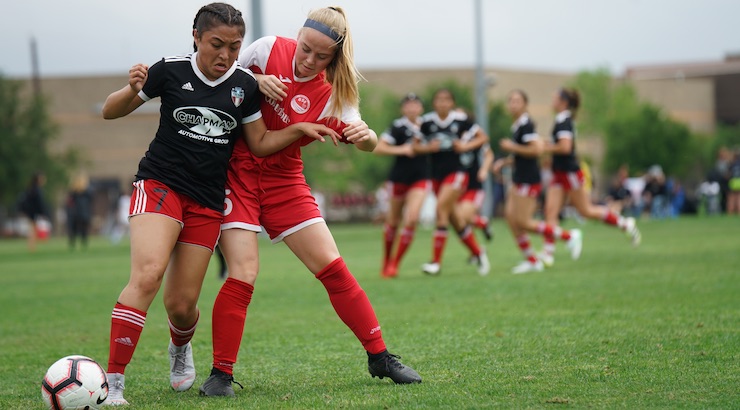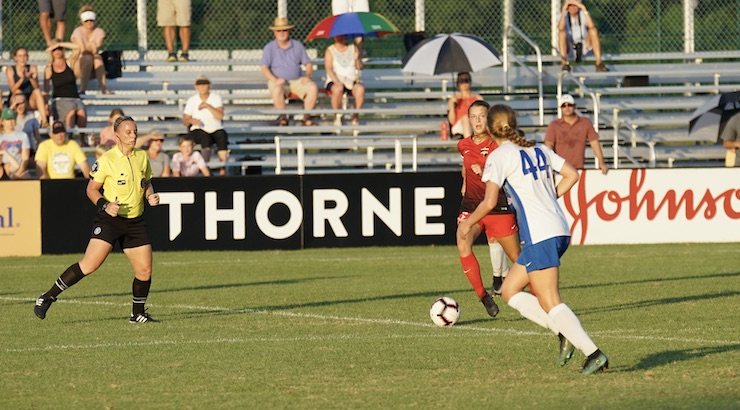1 Versus 1 Is the Most Common Situation in Soccer
Sam Snow is CEO of American Made Soccer Consultants, as well as a United Soccer Coaches Instructor and U. S. Soccer National Instructor and is a new columnist for SoccerToday. Snow is the former Director of Coaching for US Youth Soccer
One versus one (1v1) is the most common and frequent tactical situation for players. 1v1 battles play out in all levels of soccer, from the professional to the beginning brackets of youth soccer.

Every 1v1 situation involves all four components of the game; fitness, attitude, technique, and tactics.
Further, no matter what position a player has on the team, he or she must be able to handle a 1v1 both offensively and defensively.
One versus one is the foundation of all tactics – individual, group and team. If players cannot win the majority of 1v1 duels on both offense and defense, then the odds of effectively combining in
One versus one “battles” take place on all parts of the field throughout the game.
Some are only for a split second and some last several seconds. Some of these duels are obvious to neophyte observers where only two players are in the immediate vicinity of the ball.

In most cases, though several players are near the ball during a 1v1. Many coaches do not recognize that a 1v1 is happening even if only for a moment. For example, in a 2v1 situation, the first attacker (player with the ball) must decide if he or she will pass to the second attacker or try to dribble past the opponent solo. Even though there are three players around the ball, a 1v1 decision must be made by the first attacker. Since these confrontations take place across the field for the entire match, all players must be able to defend and attack in a 1v1 to a reasonable degree.
In a 1v1, the two players are playing one of two roles.
One is the first attacker, who either penetrates via shooting, dribbling or passing or he or she maintains possession of the ball via shielding, dribbling or passing to a teammate.
The other role is the first defender who tries to deny penetration via interception of passes, one-touch clearances, tackling, shepherding, jockeying, containing or tracking runs. He or she may also try to regain possession of the ball from the opponent or at least dispossess the opponent.

Defensive Techniques in Soccer
The defensive techniques required include; how to intercept passes, one-touch clearances with the head or foot, how to jockey or shepherd the opponent with the ball, speed and angle of approach onto the opponent in possession, proper body posture, the poke tackle, the block tackle, four types of slide tackles, recovery runs and tracking runs.
Offensive Techniques in Soccer
The offensive techniques include dribbling to keep possession of the ball, dribbling to beat an opponent (penetration) and a multitude of “moves” can be used to accomplish either type of dribbling. Also required is being able to shield the ball, eight types of passes with the foot, deflection-passing with the head, chest or thigh, heading to score, crossing the ball and shooting with a plentitude of techniques.
Successful 1v1s
Learning how to take on opponents and dribble begins with the 8 and under teams. The initial coaching of how to play in a 1v1 on both offense and defense starts with the 10 and under teams and is then continuously refined throughout the player’s career.
Good fitness is requited to execute the techniques and to have a sharp mind to make these tactical decisions.
The best way to get a player fit for 1v1 duels is to put them in those situations in training — as opposed to running laps. Experience is a great teacher.
Even World Cup teams work on how to play in various 1v1 predicaments.
Over years of proper training and refinement, players should learn how to handle 1v1 situations in all thirds of the field. While defending, they must also learn that in the defensive third they handle 1v1 battles somewhat differently on the flanks than when in the center channel. The same is true when on the attack in the offensive third.

All the above concerns field players, but clearly the goalkeeper must also deal with one on one occurrences too. The most obvious is when defending the goal. In a breakaway 1v1 situation the keeper tries to get the ball:
- Before the attacker by intercepting passes (through balls and crosses)
- As the attacker is dribbling or shooting and
- After the attacker shoots (catching, blocking, kick saves, parrying
and boxing).
Unless your goalkeeper is Luis Chilavert, the offensive part of 1v1 for the keeper is limited to distribution via two or three types of throws and three types of kicks.
Performing well in a 1v1 for any player on both offense and defense requires a positive attitude.

The players must feel confident that they know how to handle most situations.
This means the coach must put the players into a variety of 1v1 opportunities at training sessions.
To keep the learning of the same topic motivational over many years requires that coaches know how to teach 1v1 in various ways.
Since 1v1 is the foundation of all tactics. It benefits everyone and the growth of the game itself when we revisit how to best succeed at 1v1s.





